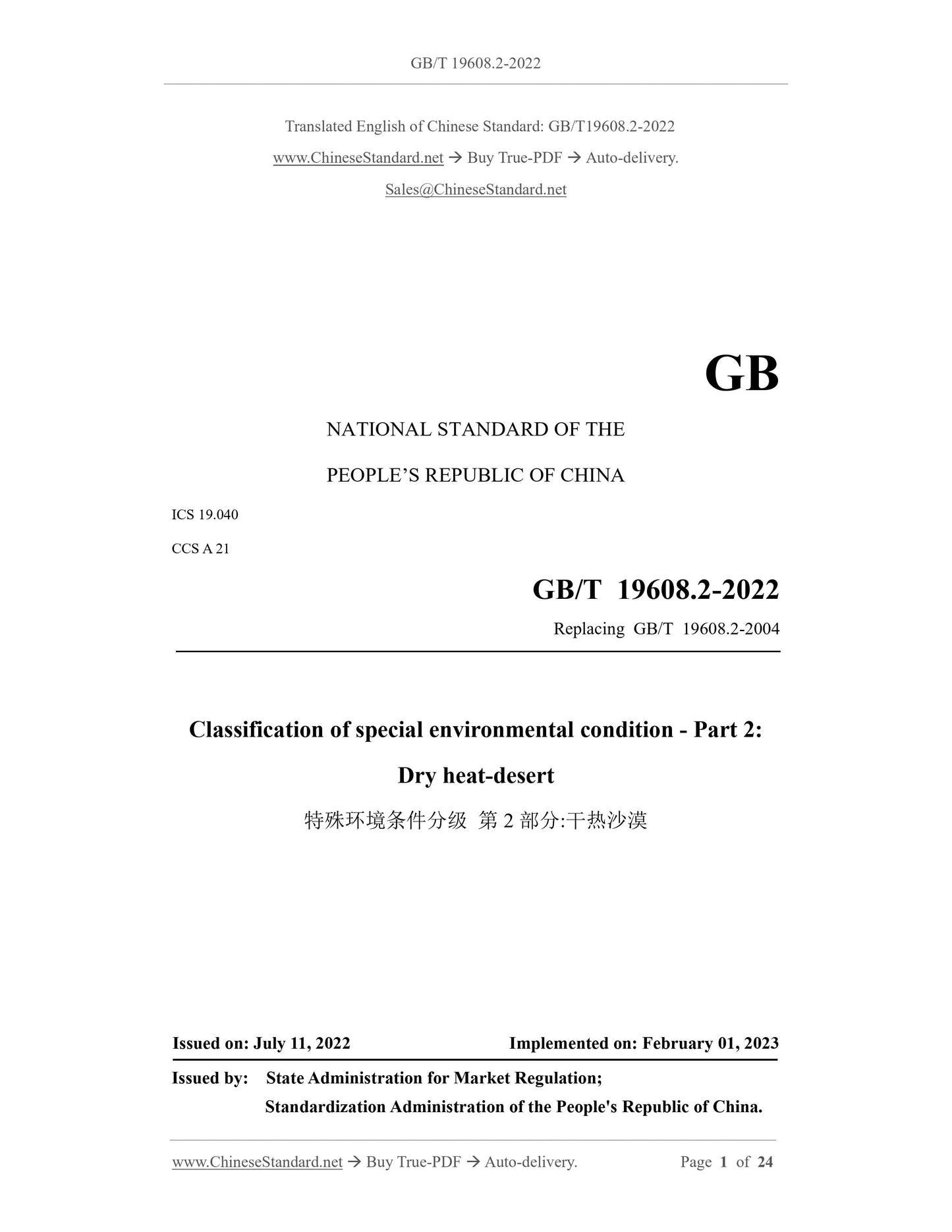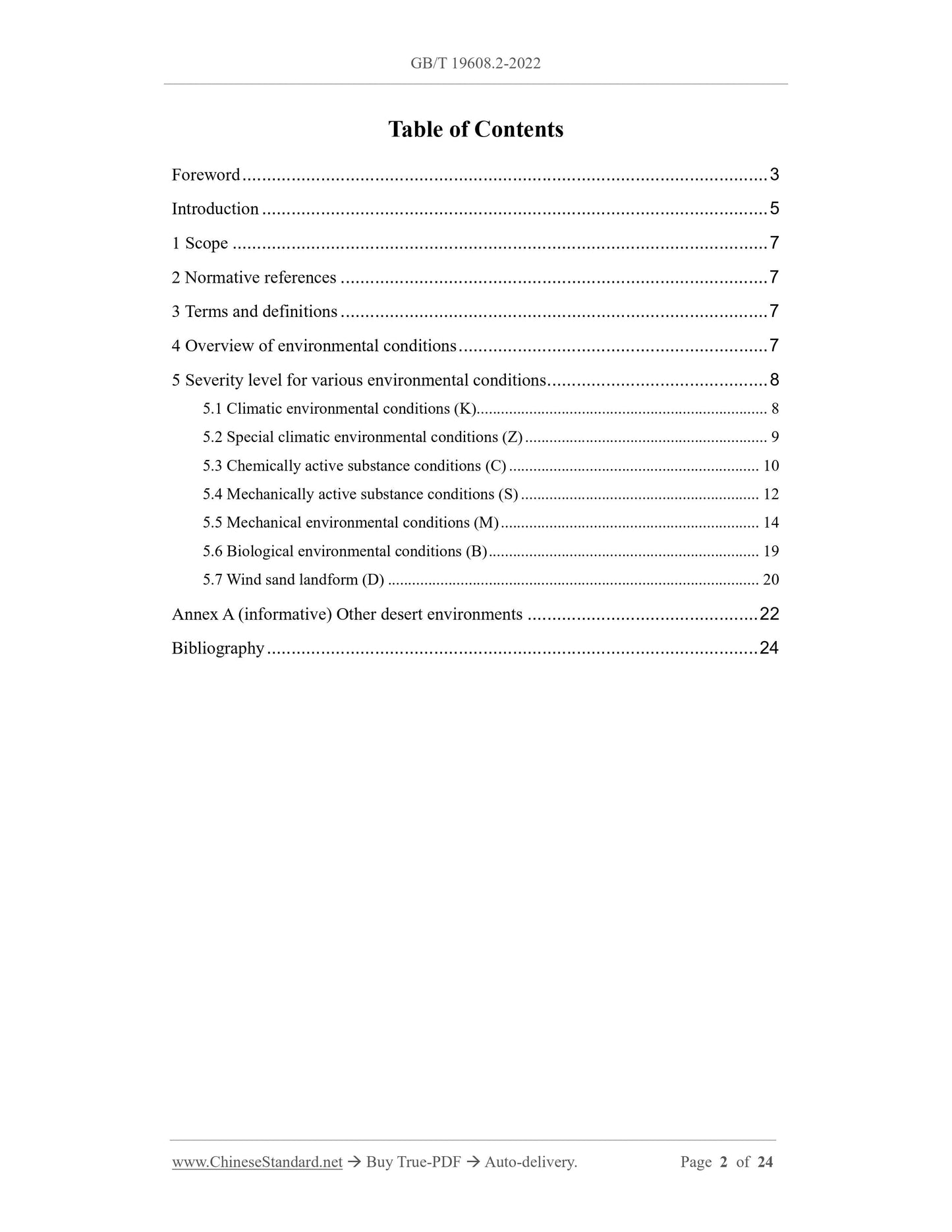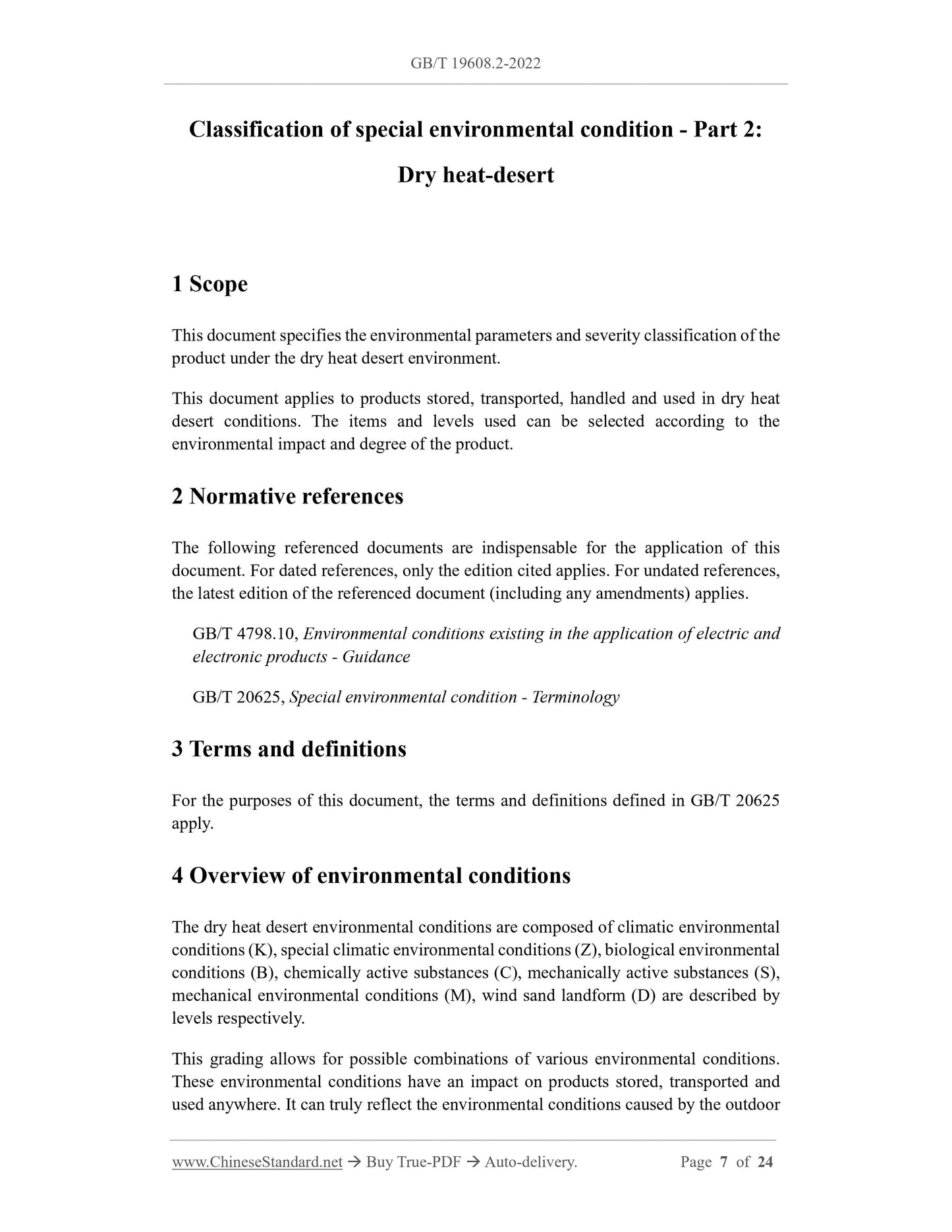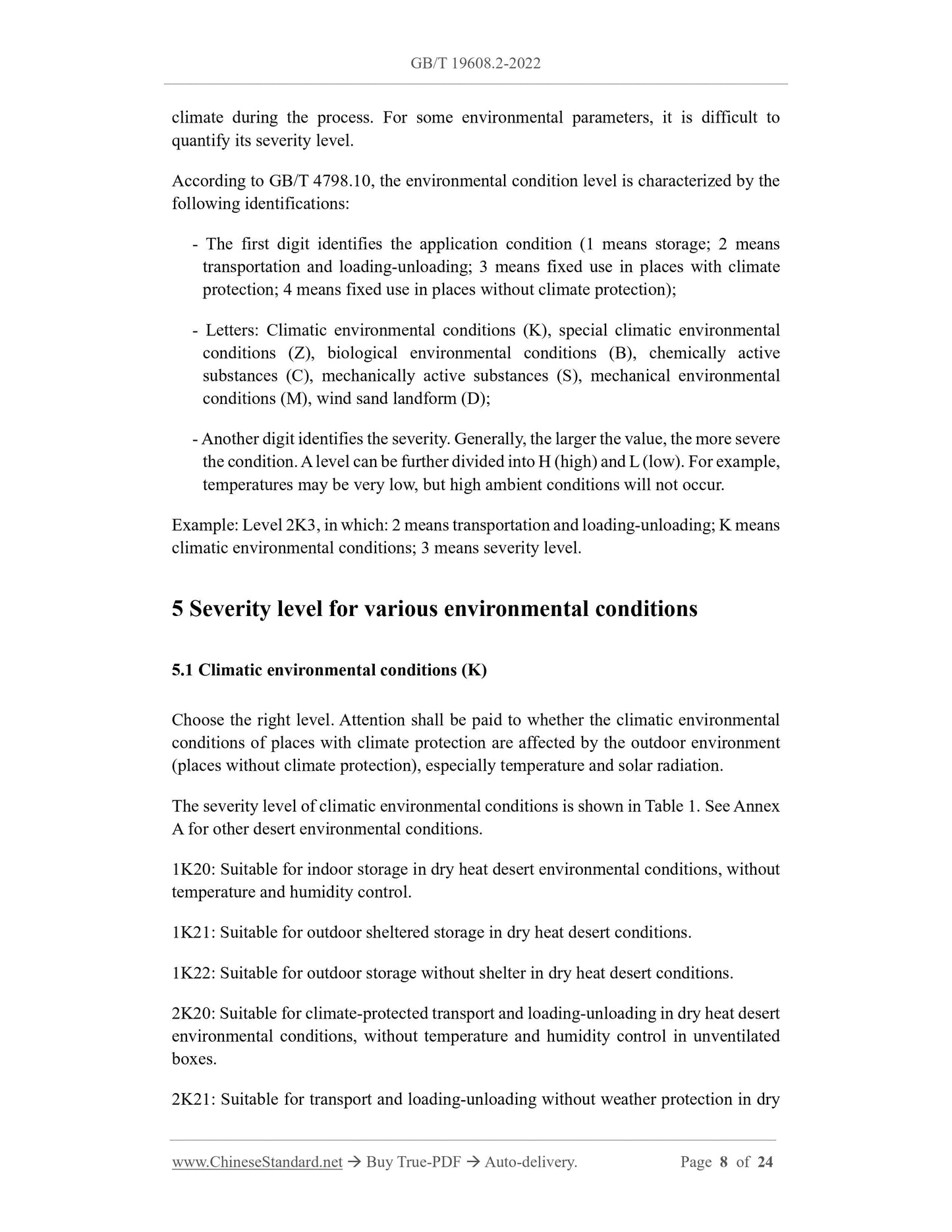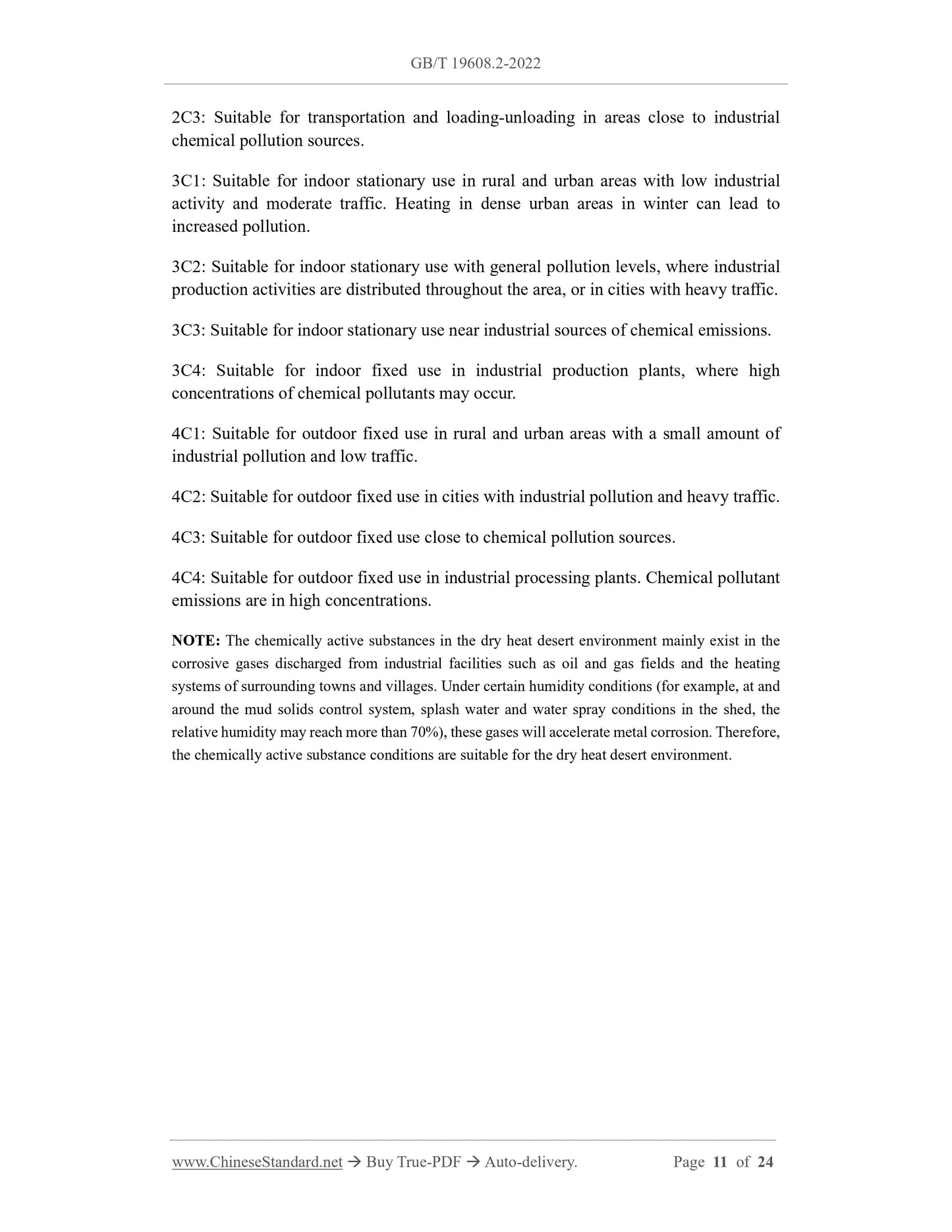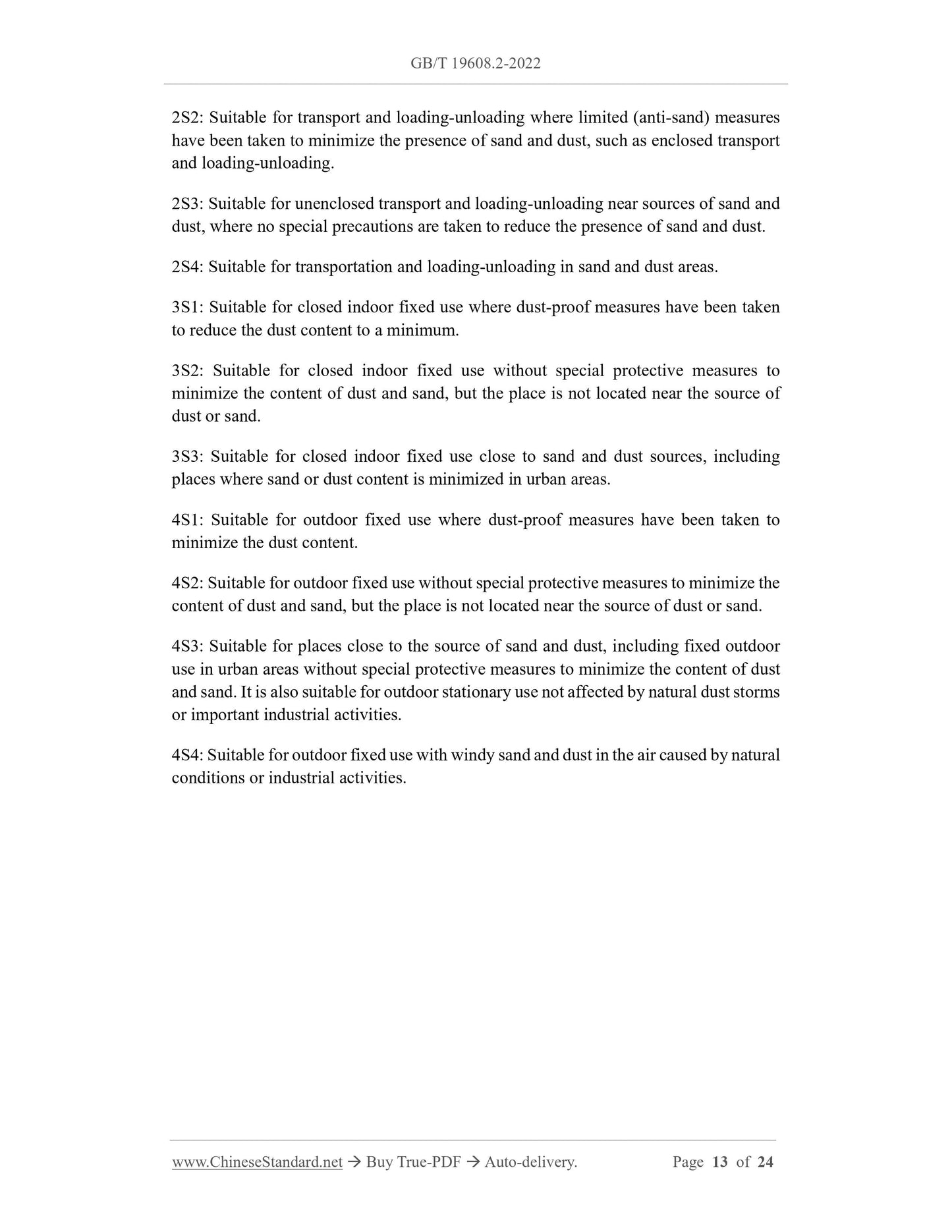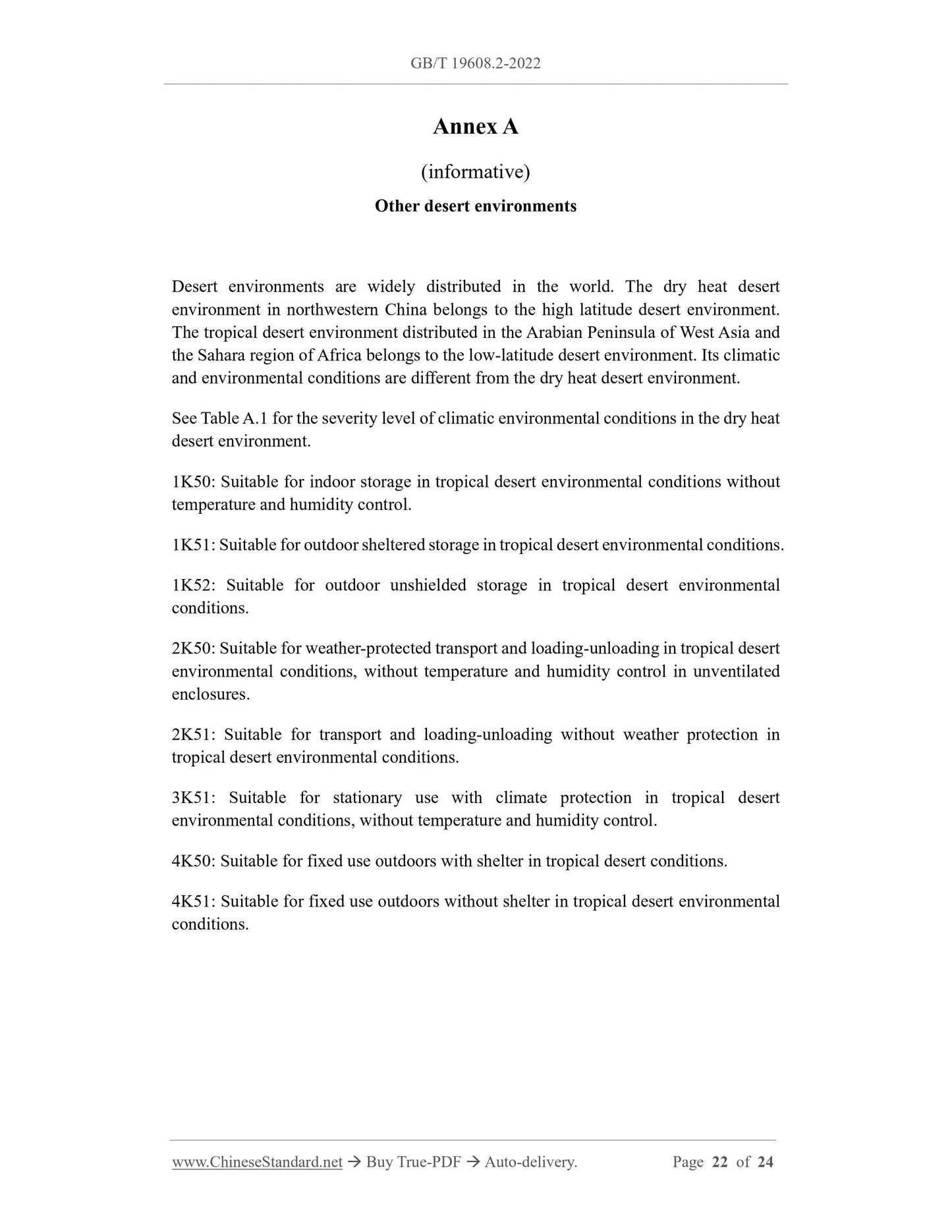1
/
of
7
www.ChineseStandard.us -- Field Test Asia Pte. Ltd.
GB/T 19608.2-2022 English PDF (GB/T19608.2-2022)
GB/T 19608.2-2022 English PDF (GB/T19608.2-2022)
Regular price
$260.00
Regular price
Sale price
$260.00
Unit price
/
per
Shipping calculated at checkout.
Couldn't load pickup availability
GB/T 19608.2-2022: Classification of special environmental condition - Part 2: Dry heat-desert
Delivery: 9 seconds. Download (and Email) true-PDF + Invoice.Get Quotation: Click GB/T 19608.2-2022 (Self-service in 1-minute)
Newer / historical versions: GB/T 19608.2-2022
Preview True-PDF
Scope
This document specifies the environmental parameters and severity classification of theproduct under the dry heat desert environment.
This document applies to products stored, transported, handled and used in dry heat
desert conditions. The items and levels used can be selected according to the
environmental impact and degree of the product.
Basic Data
| Standard ID | GB/T 19608.2-2022 (GB/T19608.2-2022) |
| Description (Translated English) | Classification of special environmental condition - Part 2: Dry heat-desert |
| Sector / Industry | National Standard (Recommended) |
| Classification of Chinese Standard | A21 |
| Word Count Estimation | 18,152 |
| Issuing agency(ies) | State Administration for Market Regulation, China National Standardization Administration |
Share
